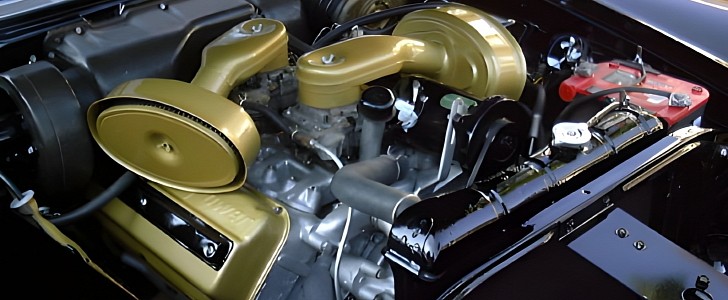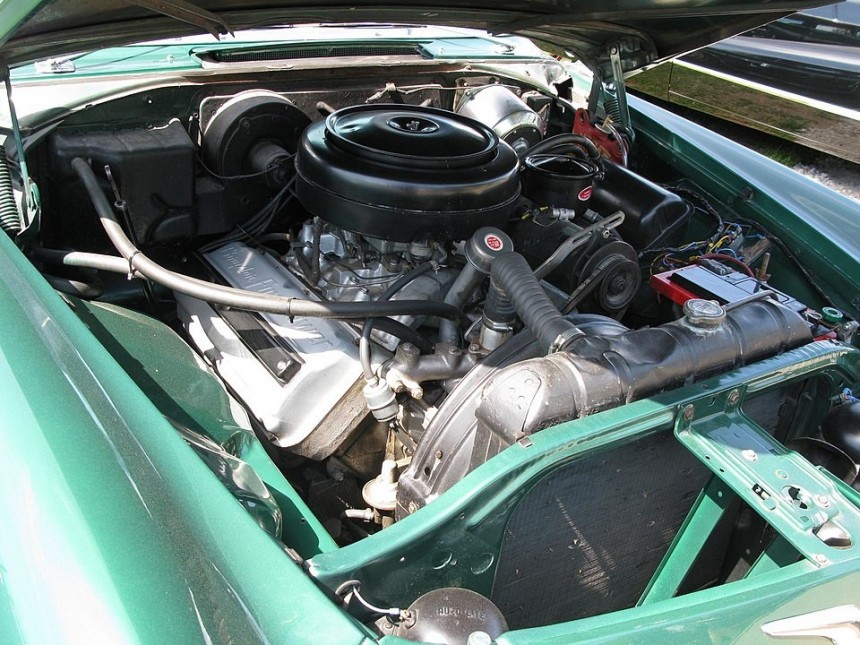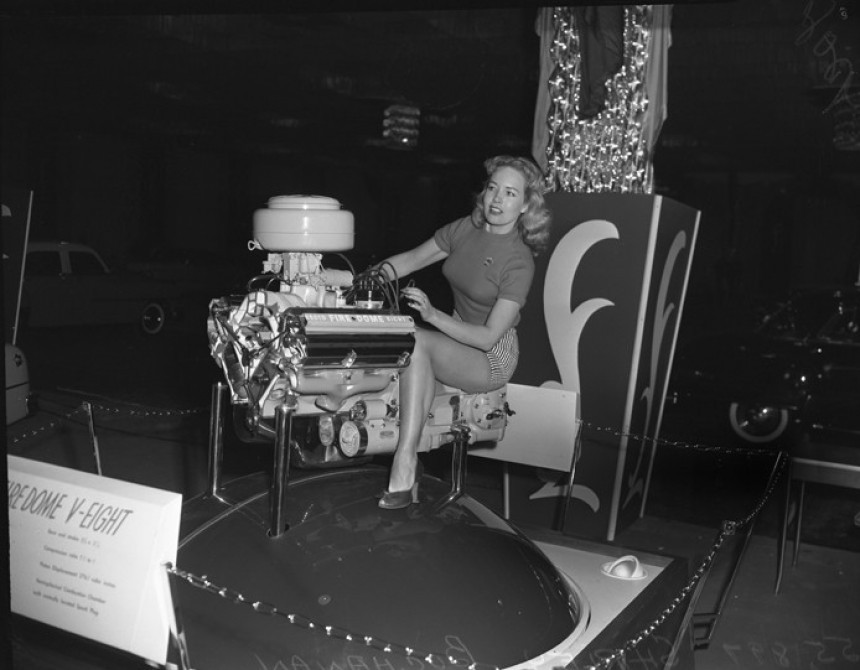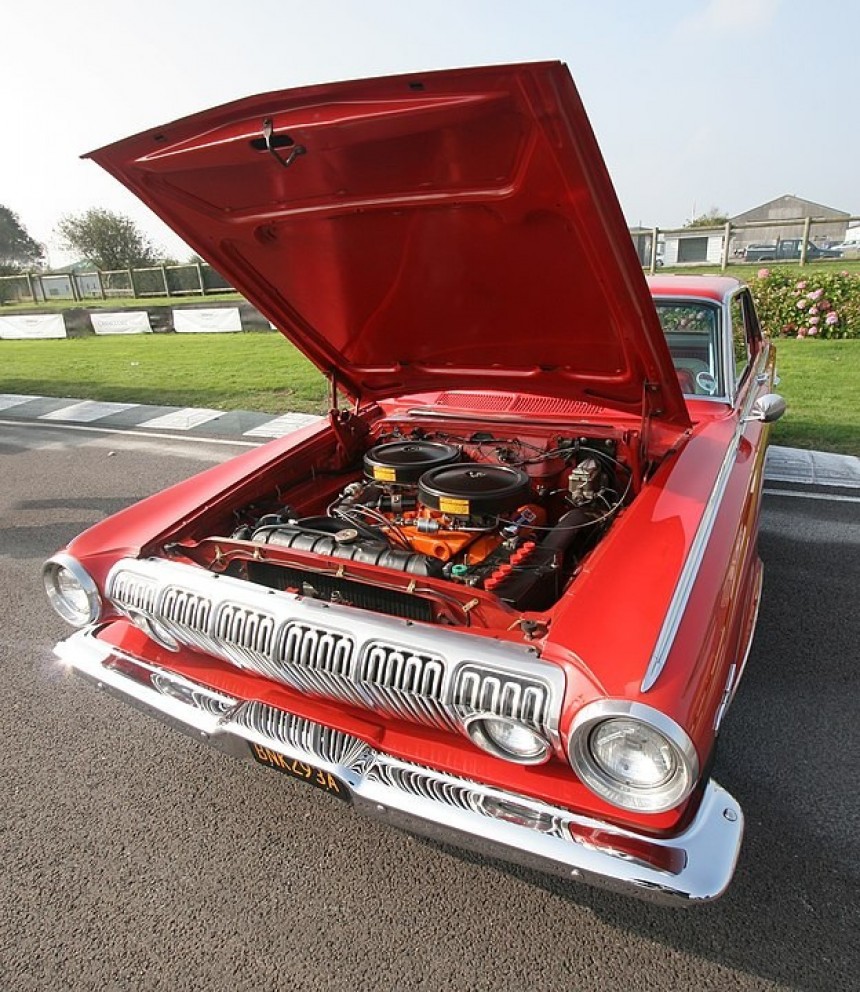Times are changing fast in the automotive industry. That shouldn't come as a shock for anyone who pays attention to what global car builders are up to. But if nothing else, a worldwide forced transition from internal combustion to all-electric everything is bound to involve some pretty painful farewells. To some of our minds, one is bound to sting more than any other.
You could easily make the same argument about many different internal combustion cars and the engines therein. But losing the American icon Chrysler/Mopar HEMI engine to the battery-powered menace has to be one of the biggest tear-jerkers. Why is that? The answer is rooted in a particularly visceral and passionate period in American automotive history.
If nothing else, this is a perfect opportunity to explain the profound cultural reach of the HEMI engine and the moniker therein has on Americans that people who live elsewhere may not fully appreciate. Looking at the first generation HEMI engine especially, we can see how a seemingly mundane upgrade in engine technology led to a cultural renaissance for Chrysler. One that it's all too happy to boast about even as it's now just another brand under the new Stellantis umbrella.
On the face of it, the hemispherical combustion chamber for which the HEMI derives its name was nothing new, even when Chrysler first applied the design to their FirePower line of overhead-valve V8 engines in 1950. Records indicate that hemispherical combustion chambers have been in use since at least 1905 by the Belgian Pipe car company, and likely even earlier. So then, Chrysler was not the first company to build "Hemi" engines as we would identify them.
Instead, they were simply the best at building them. Indeed, the first Chrysler-produced HEMI engine wasn't even an automobile engine. Instead, the Chrysler IV-2220, a 2,220 cubic inch (36.4-liter) liquid-cooled V-16 leviathan, was manufactured for the United States Army Air Corps as an engine intended to be fitted to fighter airplanes in the mid-1940s. Its first test run came while mounted in a Republic P-47 Thunderbolt. It was later mounted in the ill-fated Curtiss-Wright P-60, the spiritual successor to the iconic P-40 Warhawk. This never left the prototype phase.
What does this have to do with the modern HEMI mythos? Well, in a country that wears its patriotism on its sleeve, coming from a military background only ingratiated itself to the American identity even more. By the time Chrysler managed to scale their hemispherical combustion chamber engines down to automotive proportions, it was ready to send shockwaves through the industry that, in many ways, helped lead to the muscle car renaissance of the 60s.
At a time when Ford was still using side-valve, flathead designs for their V8 engines, the HEMI was an altogether different animal. Oldsmobile and Cadillac may have also transitioned to overhead valves by this stage, but a hemispherical combustion chamber became an ace in the hole of sorts on the Chrysler side of things. There's some debate as to if a hemispherical combustion chamber still has the same tangible benefits in the modern day as it claimed to have back in the 50s and 60s. Or, so to say, a good deal of the marketing mythos around modern Mopar HEMIs is, well, just that, all marketing.
It'd be a fair assessment that switching from side valves to overhead valves was a much more pivotal evolution. But even so, the advantages of hemispherical heads instead of flat heads did make a difference 60 years ago. The initial 331-cubic inch (5.4-liter) iterations of these early FirePower V8s jetted in the neighborhood of 180 horsepower. But by 1955, that had increased to 300 horsepower in the 392-cubic inch (6.4-liter) HEMI engine found in the Chrysler 300C.
For the middle of the 1950s, this was ludicrously powerful. In everything from Dodge trucks to De Soto coupes and sedans, and the top-of-the-line Chrysler luxury cars, these first-gen HEMI engines proved durable, happy to rev, and provided an ever so slight advantage over V8s with traditional flat heads. Under the De Soto brand, the HEMI V8 assumed the name FireDome. The Firedome Sedan, which derives its name from the engine underneath, proved to be one of the most memorable and sought-after De Soto vehicles in the brand's comparatively short history.
The largest De Soto HEMI V8 was a 344.6-cubic inch (5.6 L) unit rocking twin Carter WCFB four-barrel carburetors from the factory. Good for peak horsepower ratings of 345 hp in the Adventurer coupe and sedan built between 1956 and 1960.
On the Dodge pickup side of things, the first-gen HEMI V8 ranged in size from 241.3-cubic inches (4.0 L) and 325-cubic inch (5.3 L), the latter of which very rarely came equipped with two four-barrel carburetors, something of a Ram TRX engine of its day. A 270-cubic inch (4.4 L) HEMI also found its way onto the Dodge Royal Sedan.
There was a six-year gap between the first and second-generation HEMI engines between 1958 and 1964. During that time, the design was refined and, of course, gained further cubic inches in the process. From there, the now 426-cubic inch (7.0-liter) HEMI V8 would go on to light up the NASCAR scene and the quarter-mile crushing muscle car wars of the 60s and early 70s.
The 426 HEMI forever sealed its lineage's reputation as an all-time great American engine. But let it be known. None of it would have been possible without the groundwork laid by the lesser known, lesser appreciated first generation.
Check back real soon as we delve further into the fascinating history of the HEMI engine here on V8 Month on autoevolution.
If nothing else, this is a perfect opportunity to explain the profound cultural reach of the HEMI engine and the moniker therein has on Americans that people who live elsewhere may not fully appreciate. Looking at the first generation HEMI engine especially, we can see how a seemingly mundane upgrade in engine technology led to a cultural renaissance for Chrysler. One that it's all too happy to boast about even as it's now just another brand under the new Stellantis umbrella.
On the face of it, the hemispherical combustion chamber for which the HEMI derives its name was nothing new, even when Chrysler first applied the design to their FirePower line of overhead-valve V8 engines in 1950. Records indicate that hemispherical combustion chambers have been in use since at least 1905 by the Belgian Pipe car company, and likely even earlier. So then, Chrysler was not the first company to build "Hemi" engines as we would identify them.
Instead, they were simply the best at building them. Indeed, the first Chrysler-produced HEMI engine wasn't even an automobile engine. Instead, the Chrysler IV-2220, a 2,220 cubic inch (36.4-liter) liquid-cooled V-16 leviathan, was manufactured for the United States Army Air Corps as an engine intended to be fitted to fighter airplanes in the mid-1940s. Its first test run came while mounted in a Republic P-47 Thunderbolt. It was later mounted in the ill-fated Curtiss-Wright P-60, the spiritual successor to the iconic P-40 Warhawk. This never left the prototype phase.
At a time when Ford was still using side-valve, flathead designs for their V8 engines, the HEMI was an altogether different animal. Oldsmobile and Cadillac may have also transitioned to overhead valves by this stage, but a hemispherical combustion chamber became an ace in the hole of sorts on the Chrysler side of things. There's some debate as to if a hemispherical combustion chamber still has the same tangible benefits in the modern day as it claimed to have back in the 50s and 60s. Or, so to say, a good deal of the marketing mythos around modern Mopar HEMIs is, well, just that, all marketing.
It'd be a fair assessment that switching from side valves to overhead valves was a much more pivotal evolution. But even so, the advantages of hemispherical heads instead of flat heads did make a difference 60 years ago. The initial 331-cubic inch (5.4-liter) iterations of these early FirePower V8s jetted in the neighborhood of 180 horsepower. But by 1955, that had increased to 300 horsepower in the 392-cubic inch (6.4-liter) HEMI engine found in the Chrysler 300C.
For the middle of the 1950s, this was ludicrously powerful. In everything from Dodge trucks to De Soto coupes and sedans, and the top-of-the-line Chrysler luxury cars, these first-gen HEMI engines proved durable, happy to rev, and provided an ever so slight advantage over V8s with traditional flat heads. Under the De Soto brand, the HEMI V8 assumed the name FireDome. The Firedome Sedan, which derives its name from the engine underneath, proved to be one of the most memorable and sought-after De Soto vehicles in the brand's comparatively short history.
On the Dodge pickup side of things, the first-gen HEMI V8 ranged in size from 241.3-cubic inches (4.0 L) and 325-cubic inch (5.3 L), the latter of which very rarely came equipped with two four-barrel carburetors, something of a Ram TRX engine of its day. A 270-cubic inch (4.4 L) HEMI also found its way onto the Dodge Royal Sedan.
There was a six-year gap between the first and second-generation HEMI engines between 1958 and 1964. During that time, the design was refined and, of course, gained further cubic inches in the process. From there, the now 426-cubic inch (7.0-liter) HEMI V8 would go on to light up the NASCAR scene and the quarter-mile crushing muscle car wars of the 60s and early 70s.
The 426 HEMI forever sealed its lineage's reputation as an all-time great American engine. But let it be known. None of it would have been possible without the groundwork laid by the lesser known, lesser appreciated first generation.



